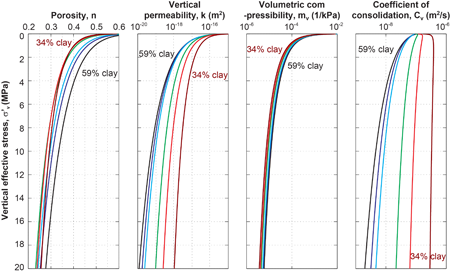Experimentally derived geomechanical behavior of mudstones
entering the Nankai Subduction Zone
By:
Julia Schneider
PhD student, UTIG
| When: | Friday, Nov. 11, 2011, 10:30 a.m. to 11:30 a.m. Join us for coffee beginning at 10:00 a.m. |
| Where: | Seminar Conference Room, 10100 Burnet Road, Bldg 196-ROC, Austin, Texas 78758 |
| Host: | Gail Christeson, UTIG |

Abstract
I use uniaxial consolidation experiments on resedimented samples of mudstones from offshore Japan to analyze the permeability and compressibility evolution during consolidation for natural mudstones with varying grain size distribution and to develop a predictive coupled permeability-compressibility model. I prepare mixtures composed of varying proportions of silt-sized silica and a marine mudstone from Site C0011 drilled seaward of the Nankai Trough during Integrated Ocean Drilling Program Expedition 322.
To recreate natural conditions yet remove variability and soil disturbance, I resediment all mixtures to a total stress of 100 kPa. In order to describe the systematic variation in permeability and compressibility with clay fraction at different stresses, I then uniaxially consolidate them to a vertical effective stress of 20 MPA, equivalent to 2 km of burial under hydrostatic conditions. At a given porosity, vertical permeability increases by two orders of magnitude and compression index decreases from 0.36 to 0.24 for clay contents (<2 m) decreasing from 59% to 34% by mass.
Backscattered electron microscope images show that pore throats in clay-rich samples are elongated and crescent-shaped whereas pore throats in silt-rich samples are larger, jagged pores that are preserved in compaction shadows and which largely contribute to higher permeability. I develop a generalized model to describe the evolution of mudstone permeability, compressibility, and hence hydraulic diffusivity (coefficient of consolidation) with vertical effective stress and as a function of grain size during burial.
How compressibility and permeability of marine mudstones evolve during burial has large implications. It helps to constrain key input parameters for basin models and to improve predictions of morphology, geometry, and pore fluid pressures in accretionary prisms.




